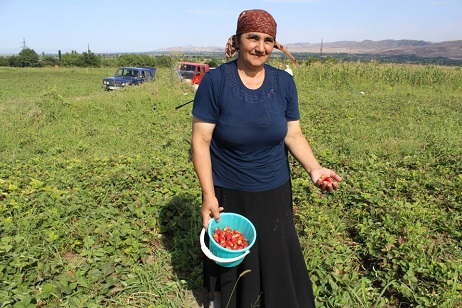Gov’t announces agro insurance subsidy program

Georgia’s Government is expecting to subsidize agricultural insurance premiums as a way to support the development of the agricultural sector - a priority area of the country’s growing economy.
Initially the new agro insurance project will operate as a pilot scheme that would finance part of a farmer’s insurance premium in the first year of the program, while the remaining costs would be covered by the farmer.
Details of the program were announced by Georgia’s Agricultural Minister Otar Danelia after today’s Governmental meeting at the Government Administration.
In the first stage of the program, the Government planned to insure some farmers who operated in the agriculture sector and from all segments of the industry.
"According to the project, the Government will finance 70 percent to 95 percent of the insurance premium in the first year of the program while the remaining 30 percent to five percent will be covered by the farmer,” Danelia said.
The Minister believed the outcomes of the experimental project would give the Government the opportunity to create a legislative basis for forming a national agro insurance law.
The program considered mobilizing financial resources worth 5 million GEL from the state budget in the first year for the rural sector, which will be secured by insurance.
Local insurance companies started offering agro insurance to Georgian farmers in 1996.
Currently two top insurance companies specialized in the agricultural sector (Aldagi BCI and GPI Holding) however the sector was poorly developed.
Experts believed this low insurance culture, low standards of risk management in agribusiness companies, incomplete and inferior statistical information and the absence of a Government program in support of agro insurance development seriously affected agro-insurance growth as well as Georgia’s agriculture sector as a whole.
Nearly 50 percent of the Georgian population was employed in agriculture.
In particular, the Georgian farming population was divided into two groups: active farmers and peasants, who composed 70 percent of all farmers and owned up to two hectares of land for cultivation.
Last year the Government launched the Agriculture Cooperatives Development program for granting and terminating the status of individual cooperatives, which aimed to commercialize small agricultural farms.
Since launching the project in November 2013, more than 160 agriculture cooperatives have been established.
During the 1990s, agriculture represented 45 percent of the country’s GDP while in 2013 the figure was 9.3 percent. It ranked fifth in the Government resource allocation after trade, industry, public administration and transport and communication.
 Tweet
Tweet  Share
Share